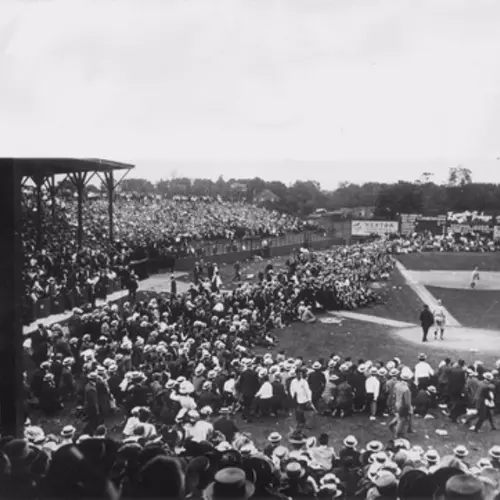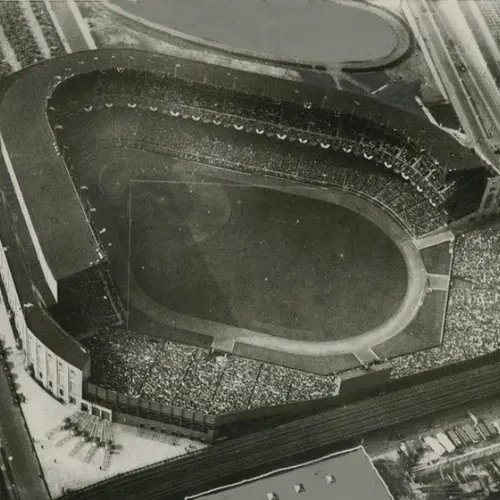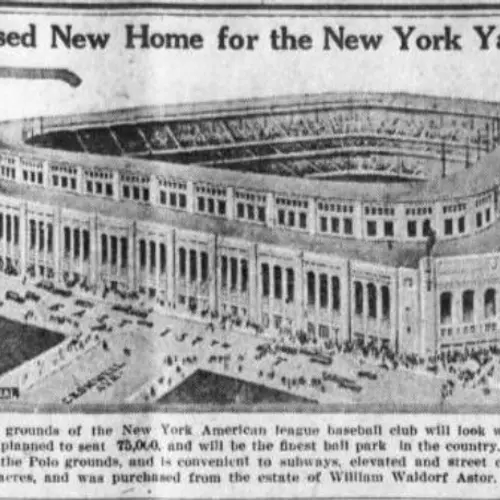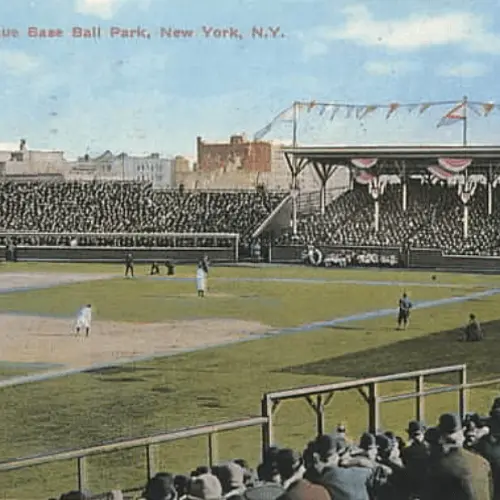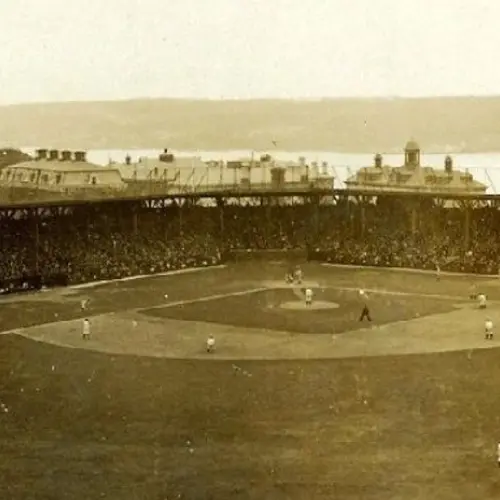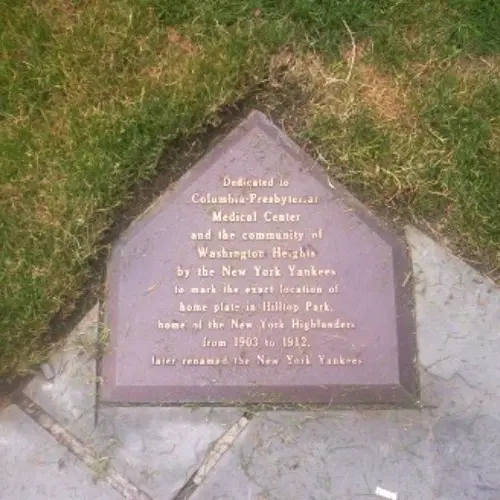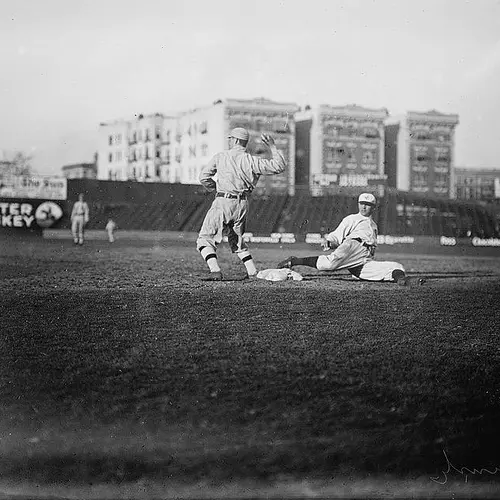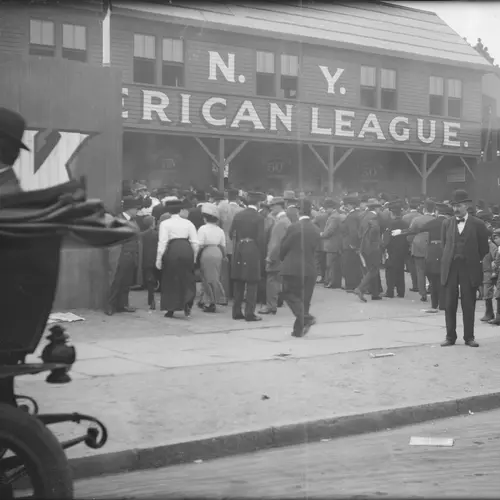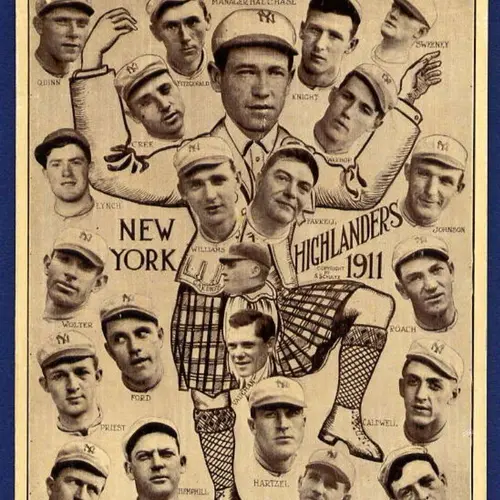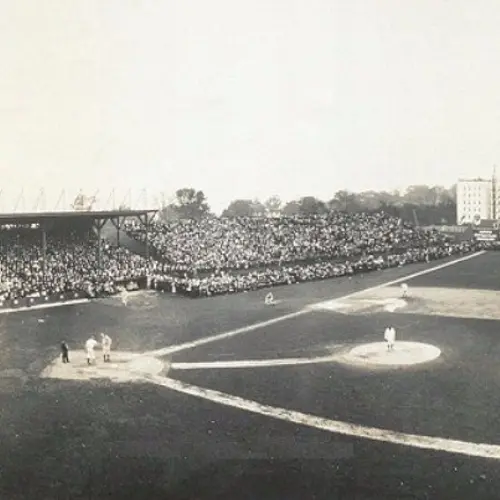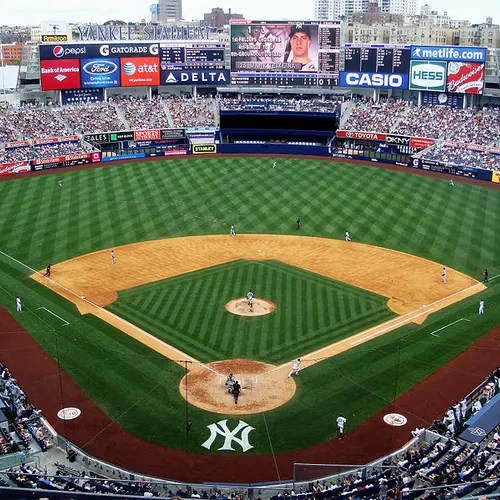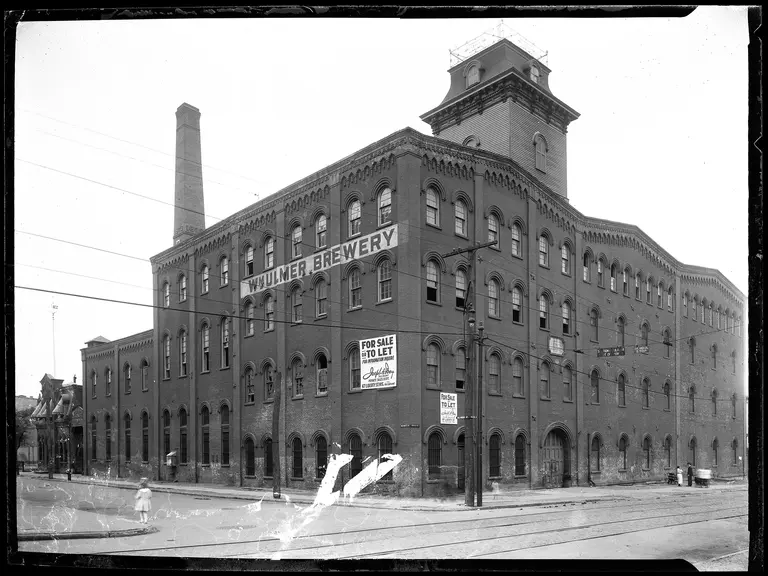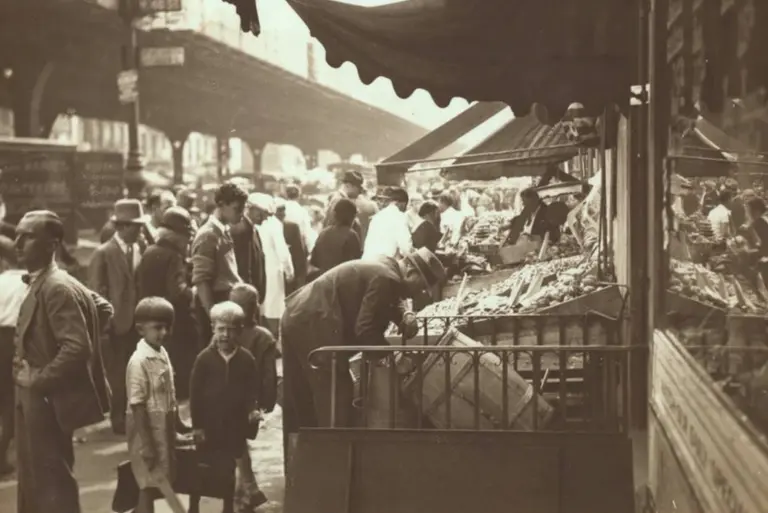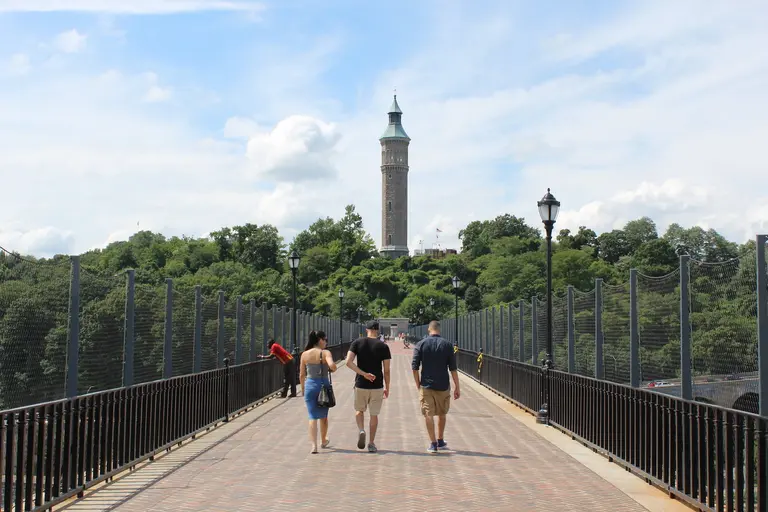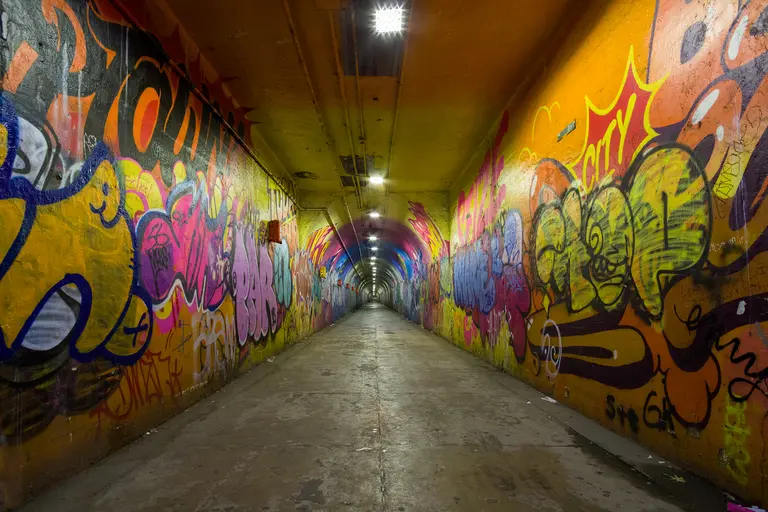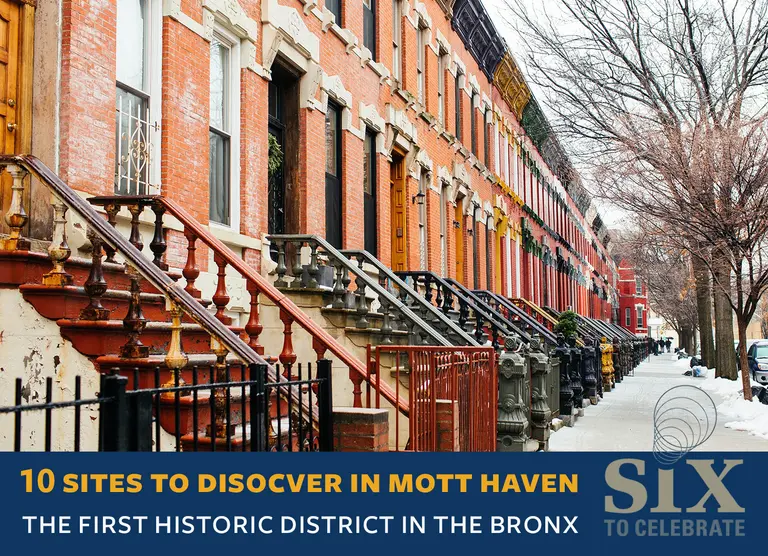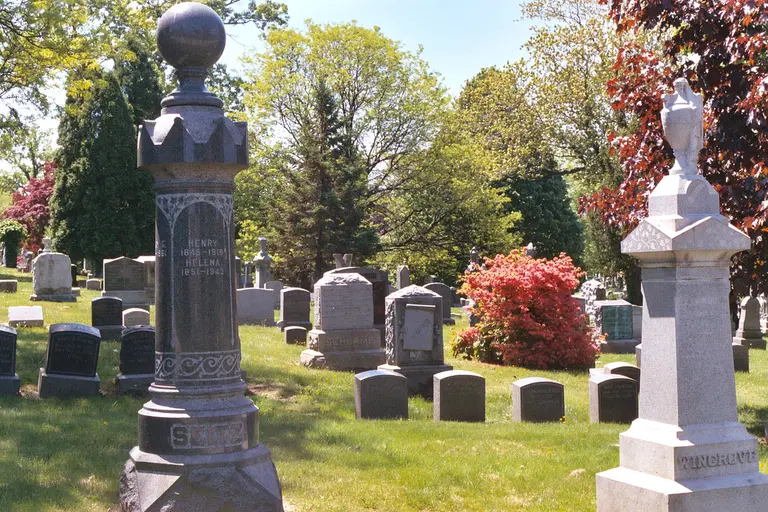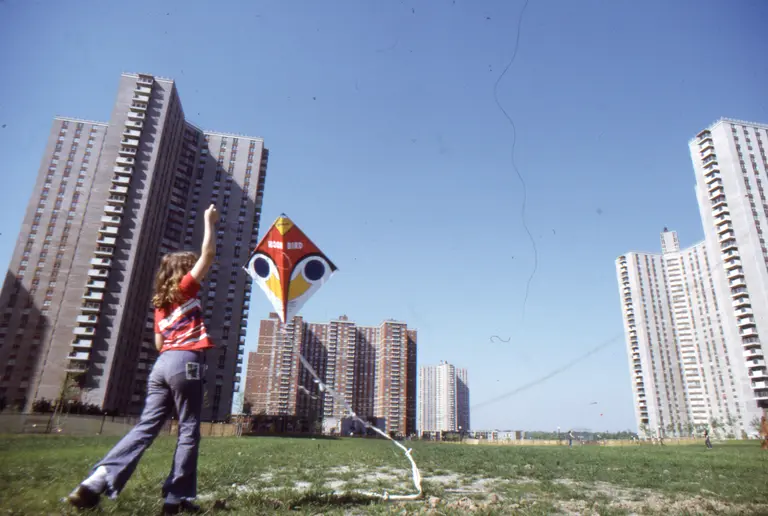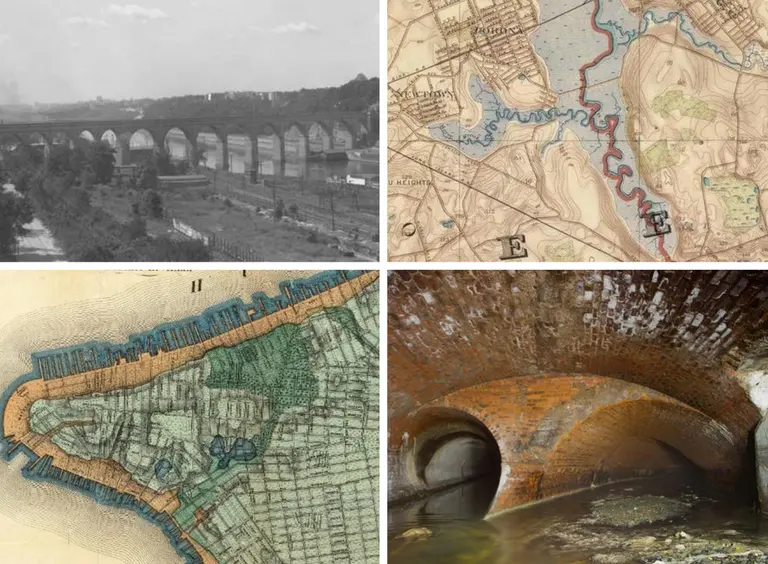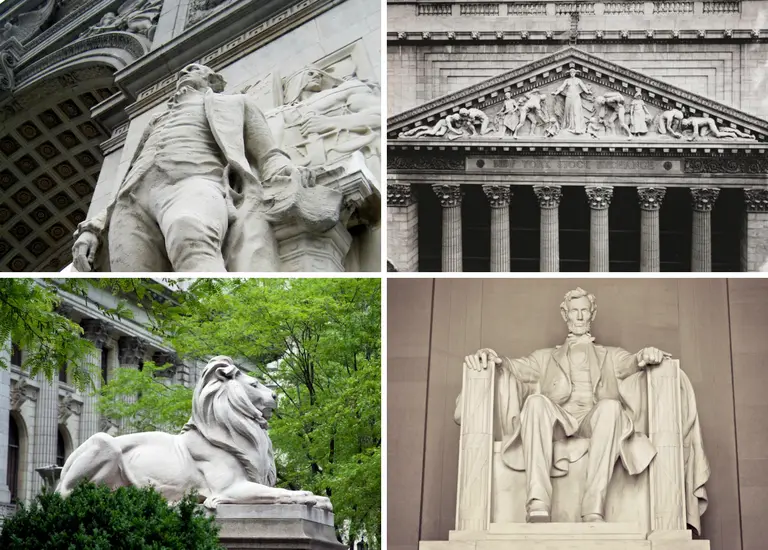When the Bronx Bombers were the Highlanders: A brief history of the Yankees
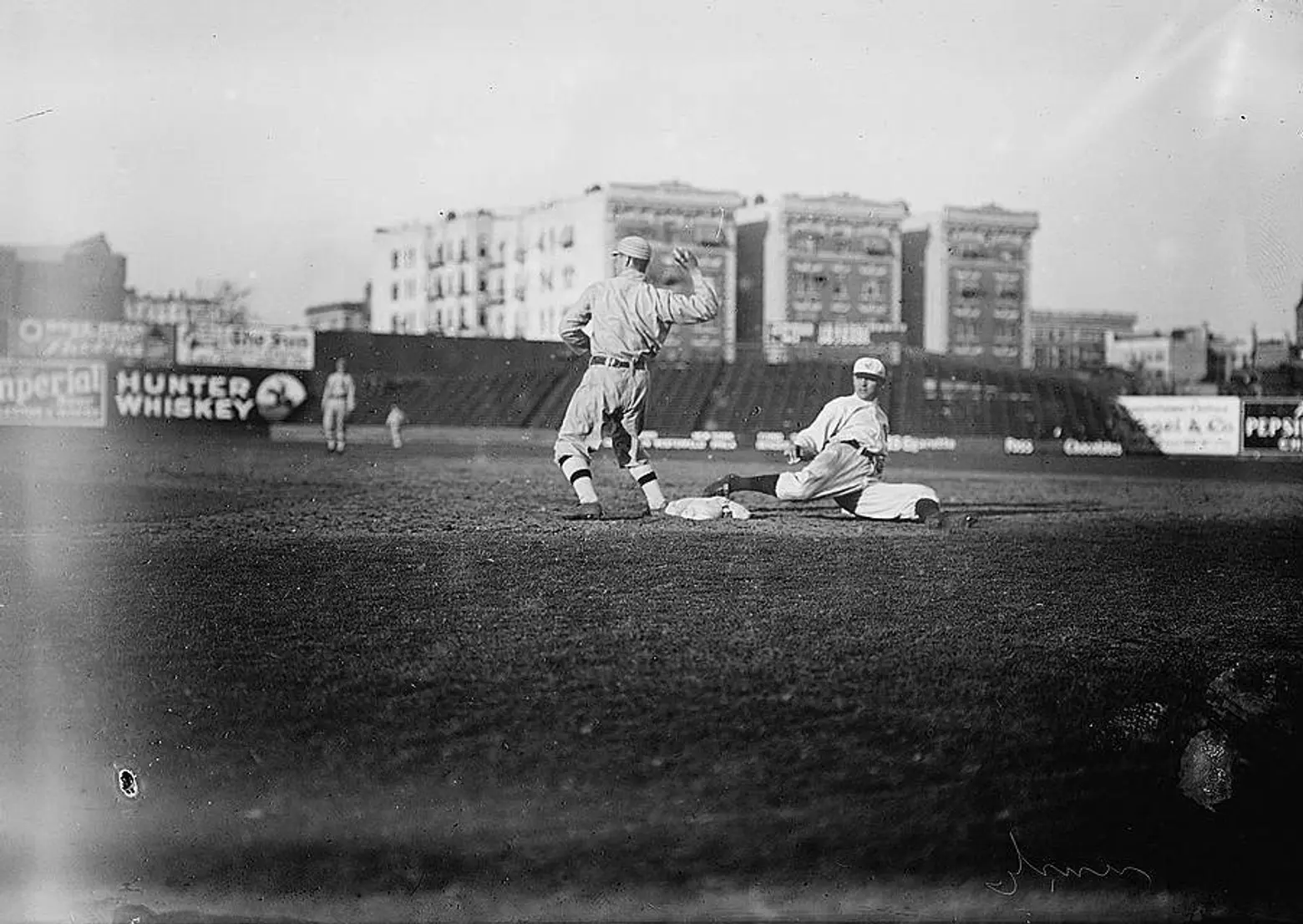
The Highlanders play a game at Hilltop Park in 1912, photo via The Library of Congress
Not unlike their current powerhouse lineup, the most dominant team in American sports got off to quite a rocky start. Not only did the New York Highlanders, now known as the Yankees, have a losing record for many years, but the team’s first home field was also a mess: it was located near a swamp, the outfield had no grass, and the ballpark sat mostly unfinished. In just six weeks, 500 men hastily built the stadium on Broadway and 168th Street in Washington Heights, known as Hilltop Park, in time for the Highlanders’ first home game on April 30, 1903. Due to the unsavory, rock-filled conditions, the last big league game at Hilltop Park was played in October of 1912. Following its closure, the Highlanders changed their name to the Yankees in 1913, moved to the Bronx, and went on to become one of the most successful sports teams in the world.
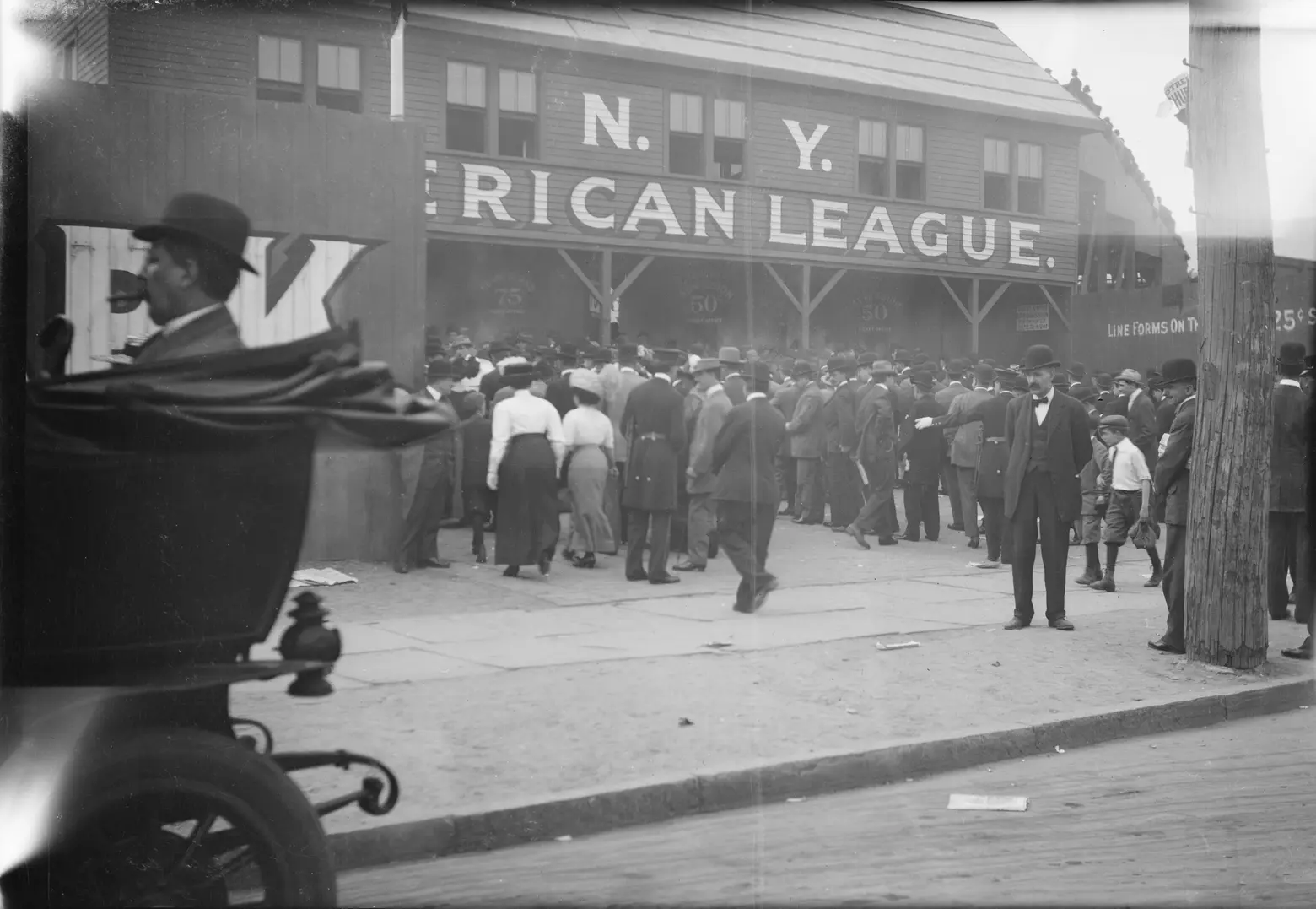
The entrance to Hilltop Park (1912) photo via Wikimedia
The team that moved to Manhattan was originally the Baltimore Orioles, the franchise that was sold to Joseph Gordon, Bill Devery and Frank Farrell for $18,000 in 1903. After the team’s acceptance into the American League in 1903, the owners changed the club’s name to the Highlanders and quickly constructed the all-wooden stadium at Hilltop Park on the west side of Broadway between 165th and 168th Streets. Construction of the park, formally known as the American League Park, cost $200,000 with more than two-thirds spent on rock blasting and excavations.
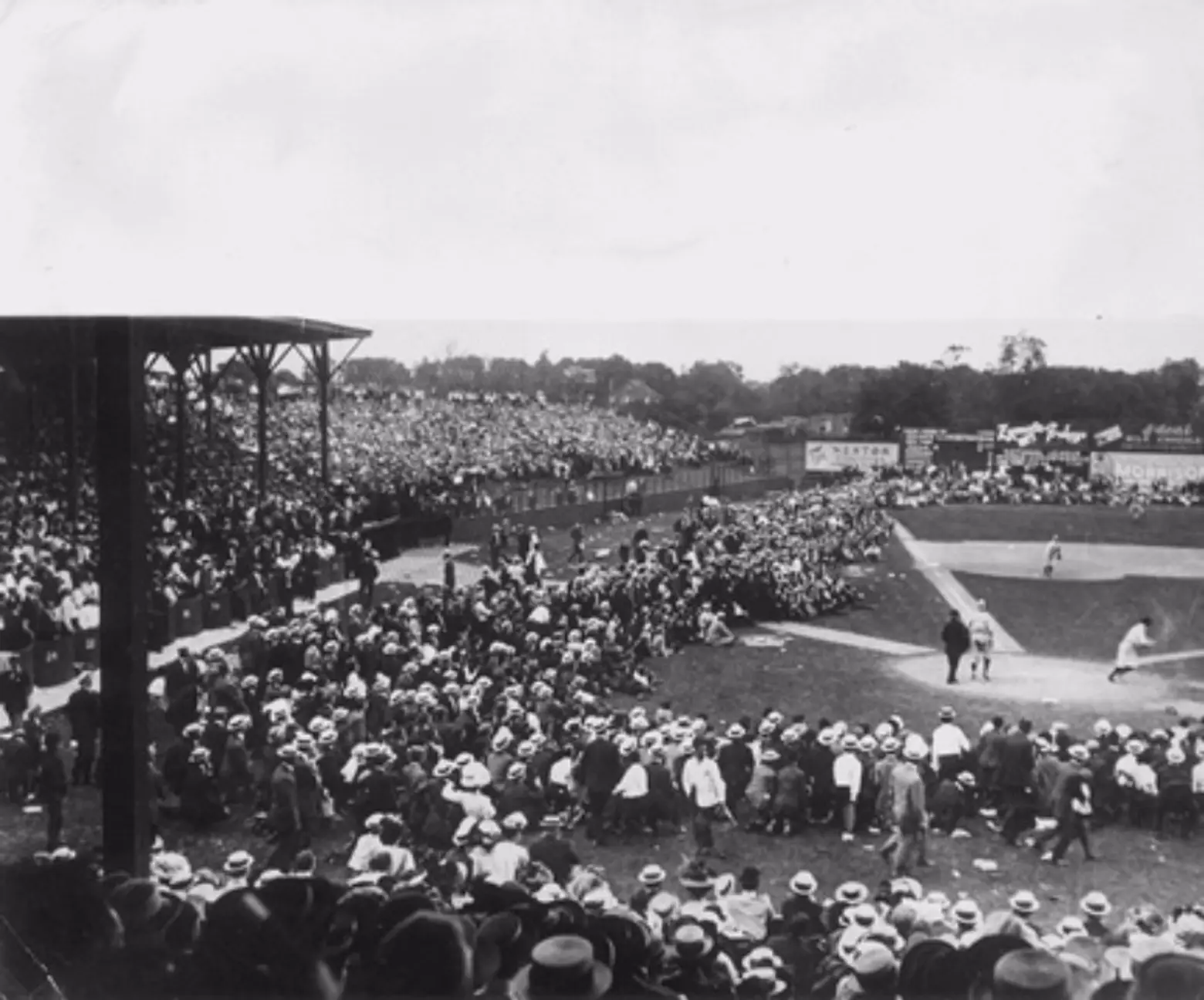
Fans could stand in the outfield and down the foul lines at Hilltop Park (1908), photo via Wikimedia
With a seating capacity of about 16,000 fans, the ballpark was quite large for its time, measuring roughly 9.6 acres. During this era of baseball, overflow crowds were allowed to stand in the perimeter of the outfield and during important games, extra fans could stand down the foul lines and between home plate and the backstop. The overall capacity was most likely closer to 25,000 fans.
Upon its opening, the stadium’s condition was poor. A swamp in right field had not been filled, the outfield lacked grass and players had to get ready in hotel rooms before the game because the clubhouse was not ready. Despite being incomplete, the location provided fans with scenic views of the Hudson River and New Jersey Palisades. An article in the New York Times described the process of turning hilly, rocky terrain into an effective ballpark: “As the property is today it will be necessary to blast all along the ridge, cutting off a slice eight feet or more. … There are about 100 trees to be pulled up by the roots.” Whenever New York was on the road during its first year, construction workers returned to Hilltop to complete additional renovations.
The team’s inaugural 1903 season failed to attract a solid fan base. Season home attendance totaled 211,808, compared with the established New York Giants, the Highlander’s hometown rival, who drew 579,530 fans. In 1904, the West Side subway station opened, attracting more fans as the stadium became more accessible. Plus, the field conditions improved. That year, about 438,919 fans cheered on the Highlanders at home, doubling the total attendance from the previous year.

A home-plate-shaped plaque commemorating Hilltop Park, photo via Wikimedia
The National League Giants played just south of Hilltop Park at the Polo Grounds, located between 155th and 159th Streets. The Giant’s stadium burned down in a fire in 1911 and the Highlanders offered to share the Hilltop stadium with their hometown opponent. Then, the following year, the Highlanders moved into the rebuilt Polo Grounds and changed their name officially to the Yankees. After ten years, the last game played at Hilltop Park was in October of 1912. Demolished in 1914, the site of Hilltop Park remained vacant until the construction of the Columbia-Presbyterian Medical Center.
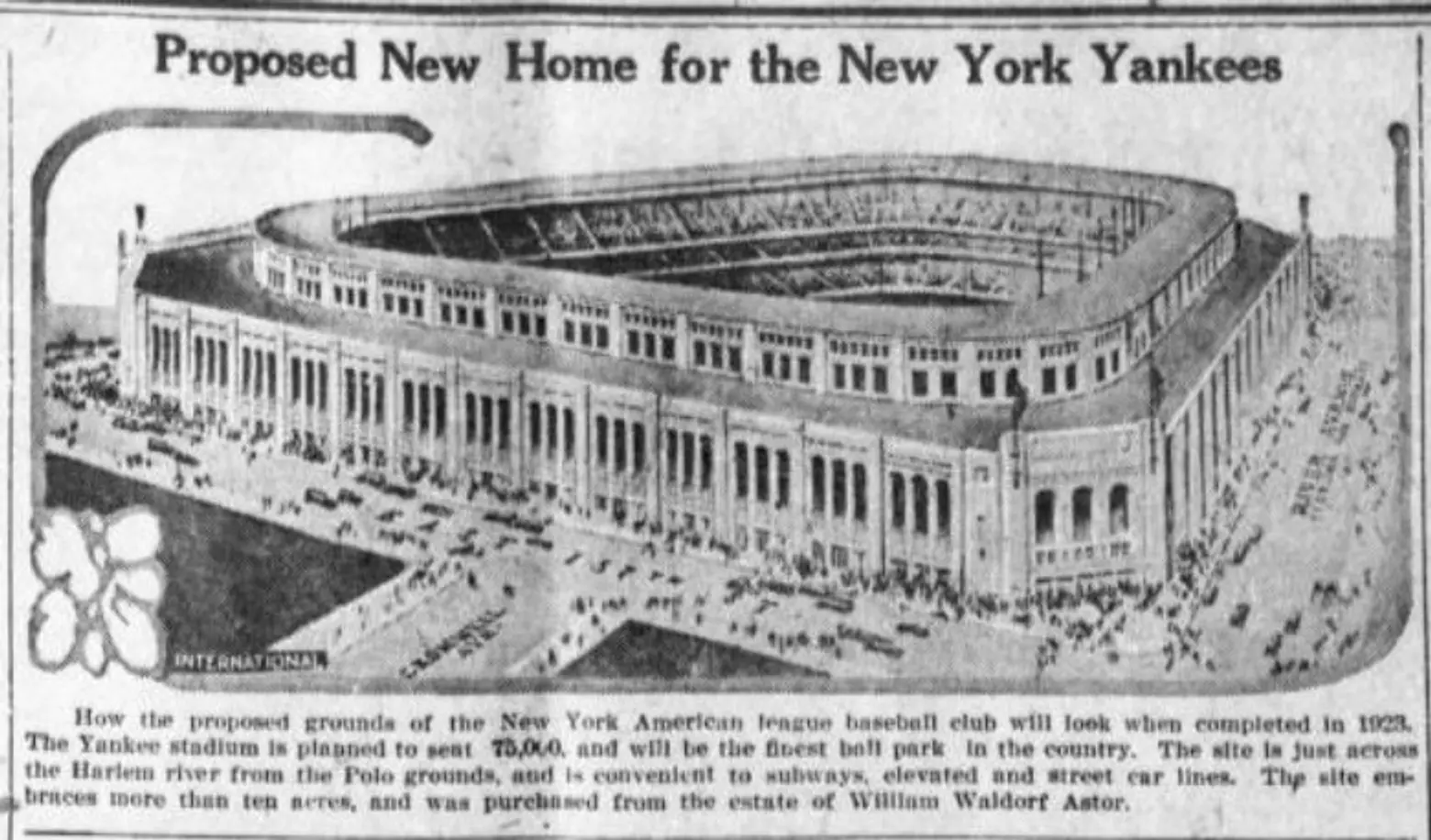
The proposal for the Yankee’s own stadium in 1921, via Wikimedia
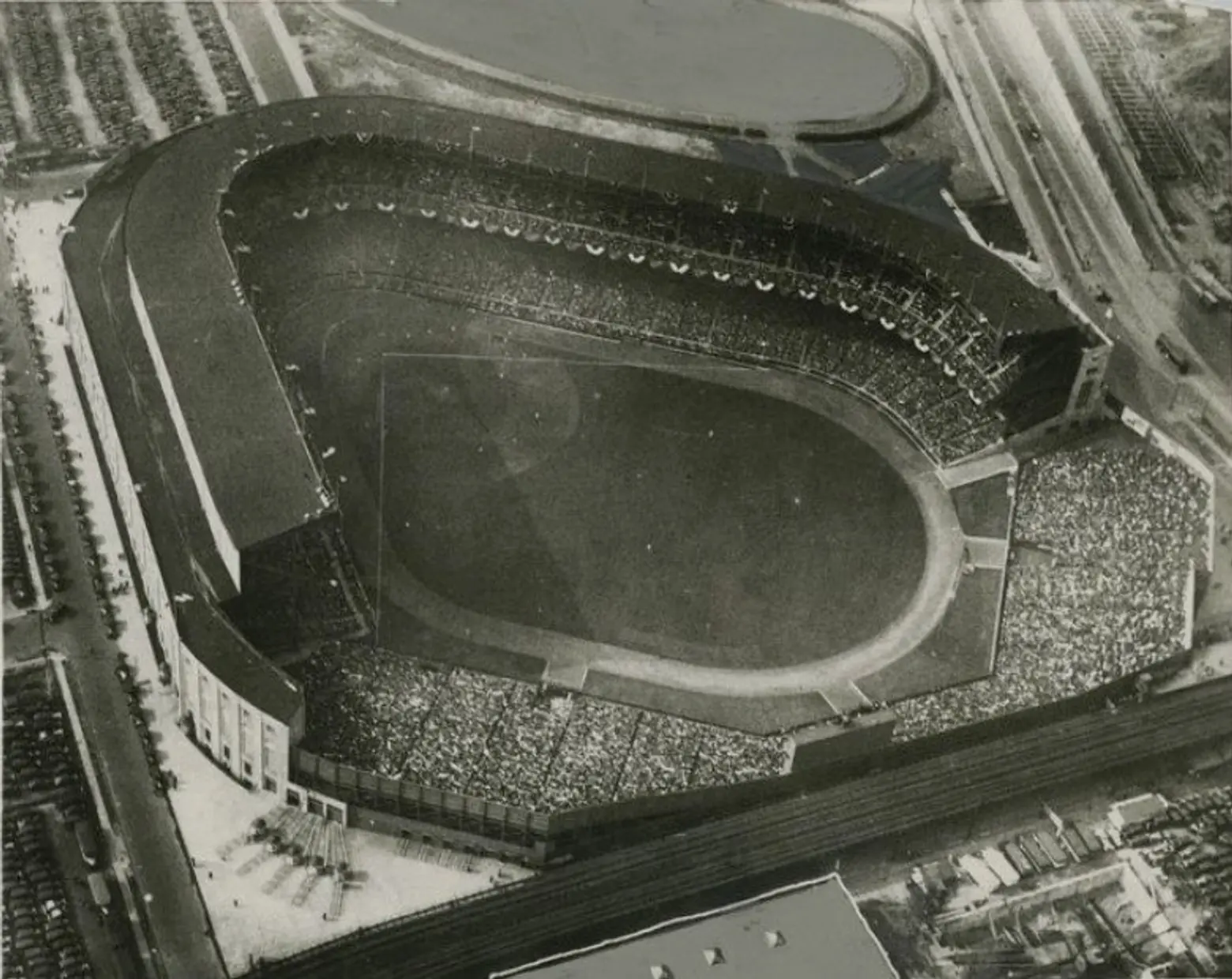
An aerial view of Yankee Stadium, photo courtesy of the NYPL
From 1913 to 1922, the New York Yankees played at the reconstructed Polo Grounds. During their time at this stadium, the Yankees acquired Babe Ruth from the Boston Red Sox and clinched its first American League pennant. The official Yankees Stadium opened on April 18, 1923, and the team dominated the AL for most of the ’20s, with help from Ruth and Lou Gehrig.
From 1920 to 1934, the Yankees played in the World Series six times, losing the championship twice. Then, with hits from all-star slugger Joe Dimaggio, the Yankees won the World Series four years in a row between 1936 and 1939. The Bronx Bombers continued to dominate, winning a World Series every year from 1949 to 1953. Breaking their fifteen-year championship drought, Reggie “Mr. October” Jackson won the Yankees another championship by hitting three home runs in game six of the 1977 World Series against the Los Angeles Dodgers.
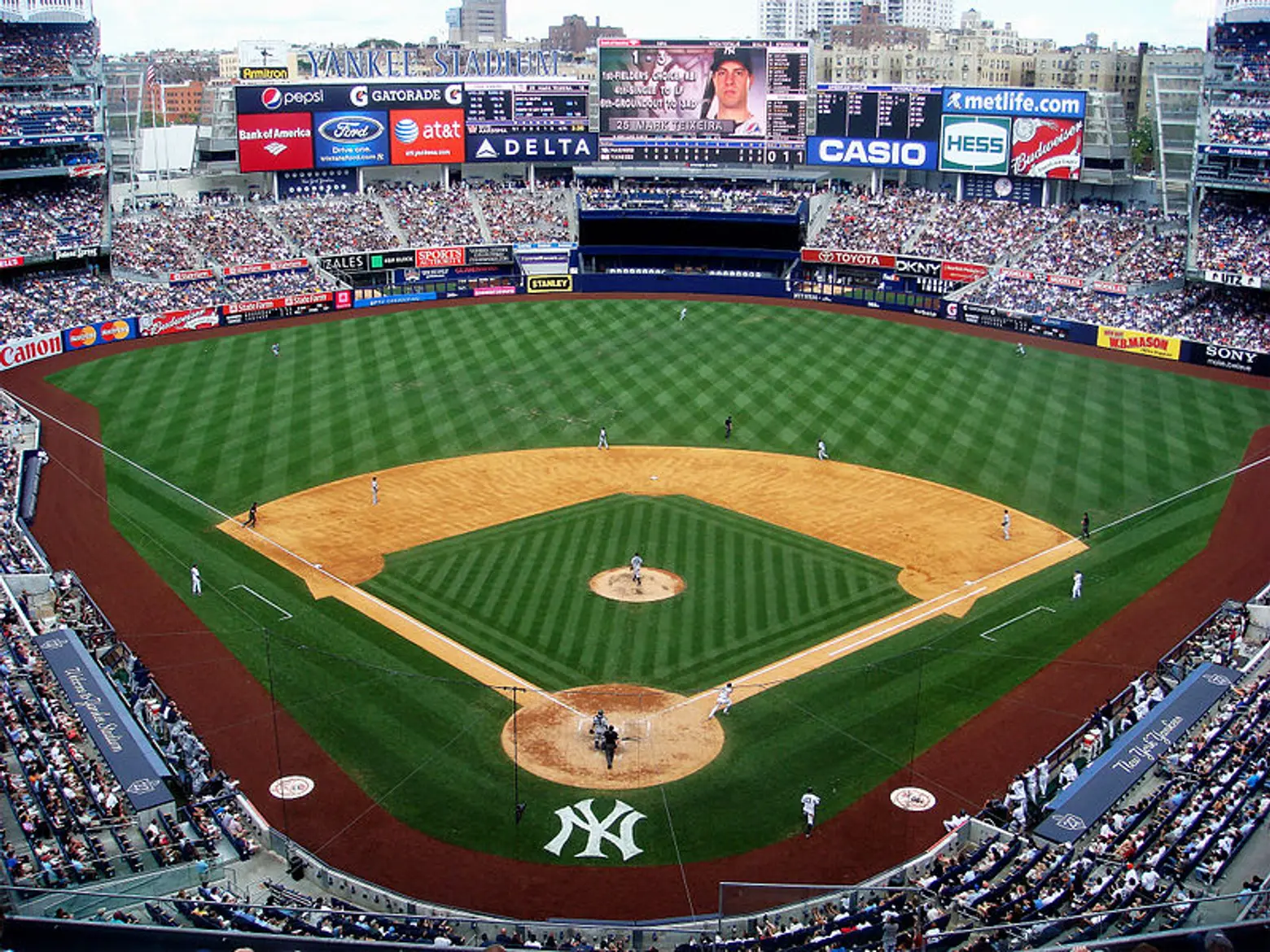
The new Yankee Stadium (2010), photo via Wikimedia
While they won the World Series in 1978, the Yanks did not take another title until 1996. With Joe Torre and future captain Derek Jeter, the Yankees won four World Series and six American League titles between 1996 and 2003, with three championship wins in a row from 1998 to 2000.
The 1923 Yankee Stadium was replaced with a new ballpark in 2009, located just one block north of the original park in the Bronx. Costing $2.3 billion, it remains the most expensive stadium ever built. With 27 world champions under their belt, the New York Yankees remain the most successful team in American sports.
RELATED:
